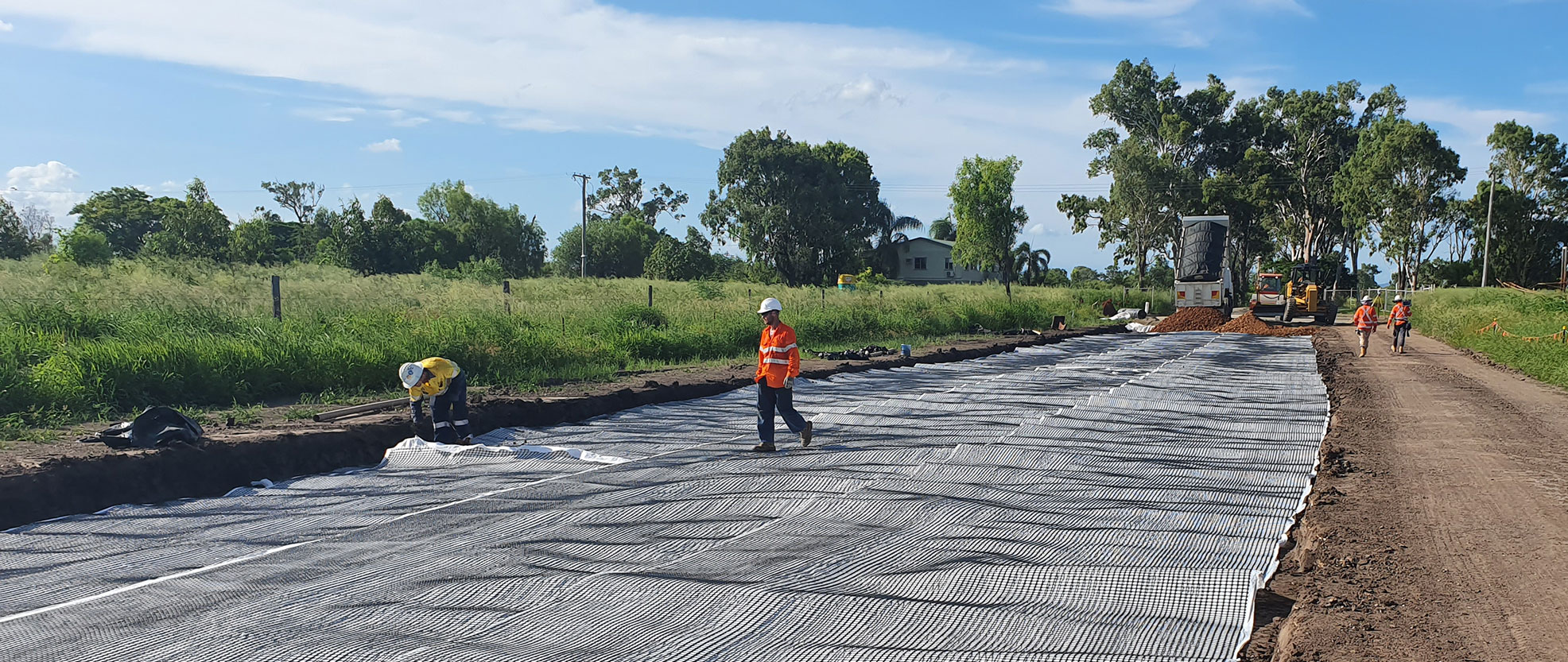Geogrid - future-proof technology

What is Geogrid?
Geogrid is a synthetic material used in civil engineering projects to provide cost-effective and time-efficient ground reinforcement. Made from polypropylene, polyethylene or polyester, Geogrid is lightweight, easy to handle, extremely strong and reliable. Geogrids are geosynthetic materials, which means they are man-made polymers which do not interact with the microorganisms in soil and thus do not degrade over time. Their primary use is the integrated reinforcement of soil.
What are its uses?
Geogrids are designed to form a natural meshing bond with soil and aggregate. Because of this, they are ideal for:
- The reinforcement of base and subgrades
- Road construction, both paved and unpaved
- The reinforcement of slopes and embankments
How do they work?
Uniaxial geogrids have uni-directional strength; that is, their strength and support operate along one direction. Biaxial geogrids provide equal support and equal strength in two directions or planes (for example, north-south plus east-west). Geogrids work by forming a structure interwoven with the soil or granular material placed over them. The open-aperture design allows the material to be confined within the grids, dramatically increasing the strength of the layer.
Where are the cost-savings?
Soils are generally innately weak in tension. Historically, reinforcing soil has been a costly and time-consuming enterprise. Geogrids offer a high-tech, cost-effective solution. The fact that engineers can literally roll out geogrids by the metre and can greatly reduce granular base thickness in their presence means immediate cost and time savings.
Hidden benefits
Not only do geogrids add significant tensile strength to soils, but the use of high-strength polyester fibres which are purpose-engineered makes them suitable for all normally occurring soil types and design lives exceeding 120 years. On top of this, recent analysis shows that contractors can achieve savings of up to 50% in construction carbon-dioxide emissions.
Relevant industries
Asphalt Geogrids
The construction of roads and pavements or the repair of ageing ones require specific attention to be paid to temperature variations, stress and load-bearing, vehicle traffic loading, fatigue and water ingress.
Ground stabilisation
By using geogrids, engineers can reduce the thickness of capping layers by half compared with a standard un-stabilised design, and this is without any loss of performance. A contractor can save significant expenses on ground improvement work because of the reduction – up to 30% - in layer thickness.
Road rehabilitation
Road renewal, especially full-depth reconstruction, is a costly business. The employment of a geogrid layer has been proven to increase the life-span of road pavement by more than three times, thereby reducing annual maintenance budgets by over 50%.
Heavy load access roads
The bearing capacity of weak subgrades can be increased by using geogrids, when necessary, to construct access roads for very heavy loads. For example, constructing access for cranes needed for the installation of wind farms where the bearing capacity of a road has to be able to withstand unusually heavy loads across typically weak soil substrates.
Capping sludge lagoons and industrial waste deposits
What was once considered almost impossible has now become a manageable challenge, thanks to geogrids. Engineers have been able to develop techniques utilising geogrids to cap weak deposits, making geogrids the industry standard for such challenges today.
Spanning voids
Australia is peppered with abandoned mines and these areas often require protection against the risk of sudden collapse and the opening of a dangerous ‘crown hole.’ Geogrid technology provides authorities with valuable warning signs and lead time to take action and ensure public safety.
Railways
On railway projects, geogrids stabilise the rail ballast and trackbed and improve bearing capacity. They also significantly reduce any movement of rail ballast, meaning that less maintenance will be required over the railway line’s lifetime.
Airport and heavy-duty pavements
Multiple layers of geogrids form a stiff platform that spreads heavy loads across a large area and reduces unequal settlement and cracking. In some situations, several layers of geogrids are required, particularly where soft ground is prevalent.
Retaining walls and slopes
Uniaxial geogrids are ideal for the construction of soil slopes and retaining walls. They provide reinforcement by containing lateral earth pressure and spreading the load. In retaining wall systems, uniaxial geogrids are ideal for the reinforcement of soil mass. Geogrids are designed to link with a number of different block systems, steel mesh panels and concrete panels to form a super-strength retaining wall. They can also be used for wrap-around facings.
Slopes and slip repairs
Geogrid technology means that slopes of any angle can be constructed using a variety of fills. This is a quick, cost-effective means of constructing embankments and slip repairs that need to tackle a steep face angle. Geogrids offer time, cost and CO2 emissions-saving solutions that promise long-term stability and significant reductions in maintenance costs.
 Sign In
Sign In 

